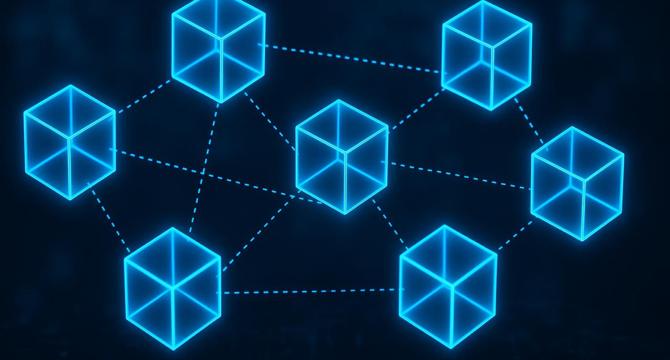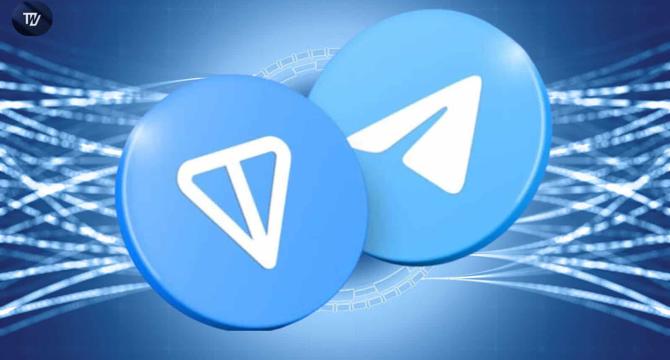Blockchain News
Coindoo
5d
114

Image Credit: Coindoo
Sonic Launches New DAG-Based Consensus Protocol
- Sonic has launched SonicCS 2.0, a new consensus protocol based on a Directed Acyclic Graph (DAG) framework.
- The protocol enables parallel transaction ordering, leading to faster processing and a 68% reduction in memory usage compared to its predecessor.
- A key innovation in SonicCS 2.0 is the parallel processing of leader selection using matrix-based voting logic, improving performance and confirmation times.
- Despite the advancements, Sonic token (S) has faced a 60% loss in the market, raising questions about whether the new protocol can improve investor sentiment.
Read Full Article
6 Likes
Pymnts
5d
110

Image Credit: Pymnts
Mercado Bitcoin to Tokenize Real-World Assets on XRPL Blockchain
- Mercado Bitcoin plans to tokenize more than $200 million in real-world assets on the XRP Ledger (XRPL), with support from Ripple.
- This initiative is one of the largest tokenization efforts in Latin America on the XRPL, focusing on fixed income and equity income instruments.
- Tokenizing real-world assets on the XRPL aims to improve financial market access and efficiency by leveraging blockchain technology.
- The integration of Mercado Bitcoin with the XRPL highlights the growing trust in public blockchain infrastructure among financial institutions for regulated digital products.
Read Full Article
6 Likes
Bitcoinsensus
5d
58

Image Credit: Bitcoinsensus
Belgian Court Sentences 3 in Crypto Kidnapping Case
- A Belgian court sentenced three individuals to 12 years in prison each for kidnapping the wife of a local crypto investor and demanding ransom in cryptocurrency.
- The victim was rescued after law enforcement intercepted the kidnappers' van using a high-risk maneuver.
- While the attackers were convicted, the masterminds behind the crypto-related crime are still unidentified and at large.
- The incident highlights the growing complexity of crypto-related crimes and the evolving nature of threats in the digital asset ecosystem.
Read Full Article
3 Likes
Livebitcoinnews
5d
90

Image Credit: Livebitcoinnews
Tether Approaches Bitcoin Mining Initiatives In Brazil
- Tether partners with Adecoagro to launch a Bitcoin mining project in Brazil utilizing renewable energy sources.
- The initiative aims to convert Adecoagro's excess renewable energy directly into Bitcoin, providing a sustainable approach to mining.
- Tether is moving forward with the project amidst a $4 billion lawsuit from Celsius Network, showcasing commitment to mining expansion.
- Adecoagro plans to incorporate Bitcoin mining as a strategic asset, reducing reliance on unstable energy markets and exploring new revenue streams.
Read Full Article
5 Likes
TheNewsCrypto
5d
126

Ozak AI Presale: Early Investors Eye 300x ROI as Utility Drives Demand
- Ozak AI is currently in its fourth stage of presale, offering OZ tokens at $0.005 per token with potential for high returns.
- Investors are eyeing a possible 300x return, driven by the project's strong fundamentals and the growing market demand for AI-driven solutions.
- The project's utility-driven demand stems from its focus on AI technology to develop real-world solutions, with 70% of the total token supply allocated to presale and community distribution.
- Ozak AI has been recognized in the Google Cloud Ecosystem Startup Program, showcasing its potential through access to $200,000 in cloud credits and successful participation in various industry events.
Read Full Article
7 Likes
TechBullion
5d
253

Image Credit: TechBullion
1800% ROI Still Open: Arctic Pablo Coin’s Presale Leaves Little Time And Even Less Supply While Mubarak And Slerf Steal The Spotlight
- Arctic Pablo Coin, Mubarak, and SLERF are top Meme Coins for high returns.
- Arctic Pablo offers staggering 1804.76% ROI, staking, and deflationary burns.
- Mubarak boasts +14,287% rebound from low, SLERF follows Solana's momentum.
- Pablo's adventure and SLERF's resilience create significant buzz in the market.
- Investors are eyeing these meme coins for potential exponential growth in 2025.
Read Full Article
15 Likes
Medium
5d
282

Image Credit: Medium
From Davos with Action: Building Europe’s Competitive Edge in AI and Startup Innovation
- Discussions in Davos highlighted Europe’s fragmented innovation landscape but also emphasized the continent's potential from diversity and strong collaborations, with a focus on AI and startup innovation.
- A proposal for a Single Sign-On (SSO) infrastructure was suggested to unify Europe's currently fragmented digital identity solutions, potentially enhancing global competitiveness.
- Another proposal discussed was the establishment of a pan-European startup registration system to simplify cross-border operations under harmonized EU regulations.
- Investor-focused incentives, including unified tax benefits, were recommended to facilitate greater cross-border investments and position Europe as a global innovation hub.
Read Full Article
16 Likes
Coindoo
5d
225

Image Credit: Coindoo
Abu Dhabi Lists Its First Blockchain Bond
- Abu Dhabi lists its first blockchain bond on the Abu Dhabi Securities Exchange through a collaboration between FAB, HSBC, and ADX.
- The issuance was executed using HSBC’s Orion blockchain platform, with FAB as the issuer and HSBC as the global coordinator.
- Extensive legal and regulatory groundwork was done to ensure global compliance, aiming to merge blockchain efficiency with traditional market infrastructure.
- The bond listing offers reduced operational costs, faster settlements, and increased transparency, potentially setting a new standard for debt issuance.
Read Full Article
13 Likes
TheNewsCrypto
5d
49

Ozak AI vs Chainlink: Can New AI Token Beat the Oracle Giant in Next Bull Run?
- Ozak AI combines artificial intelligence with decentralized finance to analyze market trends and improve investors' responses.
- The platform is backed by advanced blockchain infrastructure and its native OZ token is used for governance, staking, and transactions.
- Ozak AI's presale is gaining momentum with a current token price of $0.005, attracting early investors with strong upside potential.
- While Chainlink remains a dominant oracle provider in the market, Ozak AI's AI-driven approach challenges Chainlink's dominance, offering intelligent automation for financial strategies.
Read Full Article
2 Likes
Tokenhell
5d
168

Image Credit: Tokenhell
Bitcoin Mining Stocks Soar Following Strong US Jobs Data
- Bitcoin mining stocks surge after strong US jobs data with BTC treasury plans in Asia.
- Two 14-year-old Bitcoin wallets move $2.18B in BTC, sparking intrigue in the crypto world.
- Stocks of mining firms like Riot Platforms and Bitfarms rise significantly on positive news.
- Bitcoin price remains steady above $100,000, showing resilience amidst market fluctuations.
Read Full Article
10 Likes
TheNewsCrypto
5d
167

Where to Bet: Trusted Esports Sportsbook Picks for 2025
- Esports sportsbooks provide global, real-money betting on CS:GO, Dota 2, Valorant, and more.
- Essential features include full match coverage, live betting, secure payouts, and crypto support.
- Top 2025 platforms include Viking Luck, WSM Casino, Ybets, Boomerang Casino, RakeBit, and more.
Read Full Article
10 Likes
TronWeekly
5d
188

Image Credit: TronWeekly
Telegram’s TON Blockchain Builder The Open Platform Raises $28.5 Million, Hits $1 Billion Valuation
- The Open Platform raised $28.5 million in funding to expand TON blockchain adoption, leading to a $1 billion valuation.
- The funding will be used to launch TON-based apps globally, targeting markets in the U.S., EU, and other regions.
- Investment aims to onboard 1 billion users through wallet and app integration within Telegram's ecosystem.
- The funding led by Ribbit Capital and Pantera Capital highlights a shift towards equity-based investments in blockchain projects.
Read Full Article
11 Likes
TheNewsCrypto
5d
376

Shiba Inu Pumps With Emotion While Lightchain AI Pumps With Precision After 15 Presale Milestones
- Shiba Inu pumps driven by emotion and viral trends, Lightchain AI rises with precision completing 15 presale milestones.
- Shiba Inu relies on emotional market impact, while Lightchain AI focuses on measured growth and sustainability.
- Shiba Inu sees a recent 12% increase amid oversold conditions, while Lightchain AI raises $21.1 million and enters a fixed-price Bonus Round.
- Lightchain AI offers a Developer Grant Program, promoting innovative AI-blockchain solutions with grants up to $5,000 per team.
Read Full Article
22 Likes
For uninterrupted reading, download the app